Newspaper
[last edition] Journal 19: "Contact Zones" (6.23 MB)
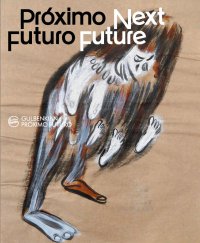 To flip, click here. (Cover by Daniel Guzmán)
To flip, click here. (Cover by Daniel Guzmán)
This year’s Next Future summer programme – an event that has, in its various editions, highlighted 'problems' in the arts, in social and political relations and in the sphere of contemporary production – focuses on two lines of activity and a novel initiative in the field of internet art. (...)
António Pinto Ribeiro, Curator of the Gulbenkian Next Future Programme (2009-2015)
Journal 18: "Without any mutant or preserving agents: the Comic Strip and intercultural dialogue" (5.15 MB)
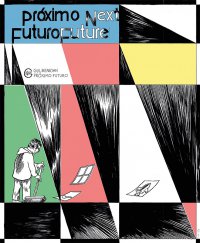 To flip, click here.
To flip, click here.Cover by Francisco Sousa Lobo
"(...) The meeting dedicated to the discussion of comic books, which is included in Next Future’s programme of events for 2015, has invited three quite different guest artists: Posy Simmonds, Anton Kannemeyer and Marcelo D'Salete. They differ from one another in terms of generation, nationality, style, tradition and the subject-matter of their work, so that together they will form a small constellation mirroring the multiple and ever-changing nature of the comic strip, an artistic field that has grown exponentially over recent decades in all of its different aspects. This meeting will seek to understand not only the modes of production, but also the answers, dialogues and reflections that the comic strip has established with the global cultural fabric (...)." Pedro Moura
Journal 17: Modernities, Brazilian Photography (1940-1964) (3.58 MB)
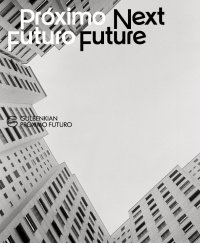
"Brazil – in the early 1940s. With the onset of the Second World War, the country was gradually becoming an option for thousands of immigrants. At the same time, it was undergoing a unique process of modernisation, which greatly affected all sectors of Brazilian society. From politics to economics, from everyday routines to culture, the life of Brazilians changed radically, driven by an unaccustomed industrialisation, mass migration and immigration, the growth of the cities and the consolidation of the new mass media – radio, cinema, and the illustrated press. The country had already passed through a first cycle of modernisation, at the turn of the 19th to the 20th century, when large cities such as São Paulo and Rio de Janeiro became more vibrant and cosmopolitan. But, this time, there was a different feeling in the air. The transformation was taking place much faster than before, invading people’s homes and propelling them into the most important process of modernisation that the country had ever seen. (...)
What, after all, was modernity in this country that refused to be pigeonholed into one single formula? The exhibition Modernities: Brazilian Photography (1940-1964) sets out to review these different forms of questioning that until now have remained largely unexplored, by analysing the formation of modern photography in Brazil, represented by four of the great names from the period: Marcel Gautherot (1910-1996), José Medeiros (1921-1990), Thomaz Farkas (1924-2011) and Hans Gunter Flieg (1923), whose collections are housed at the Instituto Moreira Salles, in São Paulo and Rio de Janeiro. (...)"
Newspaper 16: "Art, Literature, Theater, Dance, Music, Cinema " (7.13 MB)

"How and what to exhibit in the present tension that exists in reality, if we take reality, in this instance, to mean the set of facts, events, dynamics, numbers and theories that together constitute what is contemporary, and which include artistic creations and what precedes each of them?"
António Pinto Ribeiro
To flip, click here.
Newspaper 15: Pieter Hugo, Este é o Lugar | This Must Be The Place (3.99 MB)
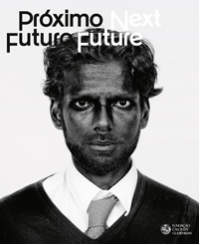
«He walked through a waste dump in Ghana. The sky was low and grey. He walked into the black smoke of acres of burning truck tyres and computers. He saw people, men and women, family groups, furtive grimaces, sidelong glances.
He took a deep breath. He filled his lungs. This was the horror he craved, the assault on his senses, his complacency. To understand all this, to penetrate its secret. The dump was here, unconcealed, but no one saw it or saw through it, no one knew it existed except the international businessmen and shipping agents, NGOs and local residents. A unique cultural deposit, fifty million tons of digital waste, and no one talked about it. He thought the biggest secrets are the ones spread open before us, under our noses.
The wind carried the chemical stink from the burning pyres. It was inescapable. It filled his mouth, clung to his clothes. He felt like he was standing on a threshold. The thing was organic, ever growing and shifting, its shape determined by the day and the hour. In a few years this would be its own city, its own country. He felt a sting of fear. He looked at all that soaring garbage and saw the future. Or was it the past? The beginning, before the beginning of time.
He saw a cow emerge from behind a cloud of smoke, nothing in front of him but a vast scene of destruction. One cow became many. Slowly they made their way together. No one led them or chased them but they seemed to know the way. They took their time. They had, it seems, all the time in the world.
He started to pack up. Day was turning to night. It always caught him by surprise on the dump. Here it was just a matter of light and darkness. It was not time passing. Time was enormous. Time preceded him and survived him. He picked up his camera.»
Stacy Hardy
Newspaper 14: "We’re of those who clean up their ears" (2.04 MB)
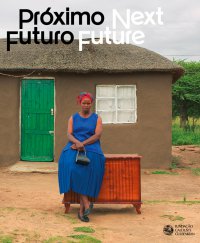
with the Mercedes key
and snap their fingers,
in the dark, at the cinema,
sons of the grape harvest and of the olive picking,
men, when the night wears cleavage.
We are, today, the best generation
of professional tired people, the best-selling authors of chance.
We train flies predators,
we clean up pasts, fat livers, kidneys filled with diamonds.
We have trembling hands, that’s correct,
but we sort out,
confidently,
the domino, in the Alzheimer’s park,
cause it’s us that the arrow’s looking for.
So, it doesn’t really matter to hurry up:
one day, someone will call us
and will mark on our chest
the lucky number
with the burning iron
that counts,
in the spring,
the cattle.
[unpublished poem by GOLGONA ANGHEL]
Newspaper 13: "I’m sorry to tell you this, but we're all africans" (4.95 MB)
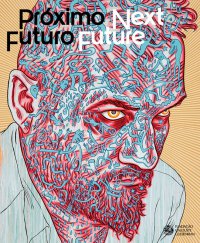
“I’m sorry to tell you this, but we’re all Africans.” These were the words that the South African bishop and winner of the Nobel Peace Prize, Desmond Tutu, chose to begin the speech that he made last year at this Foundation on the subject of world peace and sustainable development. Although we know this to be true scientifically, at least since the skeleton of Lucy was found in the Hadar region of Ethiopia, this blunt statement, proffered at the beginning of a conference, followed by a long silent pause, causes us to suspend the customary routine way in which we Europeans (regardless of however educated and informed we may be) have tended to think about our archaeology of being. [...] But, in this expression of Desmond Tutu’s, in this fragile moment of rebirth that is contained in this short phrase – there is something that can change our perception, not only of Africa but of its future prospects. And what if, in an exercise of universal citizenship and humanism – the little that still remains from the enlightened hopes placed in rationality – we were to refocus the question and centre it upon a discussion of what a humanist project could be, a project that we might perhaps call the “Lucy Project”.
Newspaper 12: "Temporary Occupations - Documents" (3.04 MB)
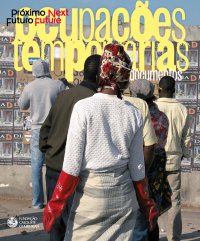
In April 2010, the arts activist Elisa Santos started up the "Temporary Occupations" in Maputo. This was a contemporary arts projects, featuring powerful intervention in the city's public spaces. For the original event, the theme given to the artists, for display in everyday settings in Maputo, was that of architectural heritage. The "Occupations" were reprised in 2011, opening on the day marking the tenth anniversary of the attack on New York's twin towers, and the topic could not have been more explicit: to connect the precarious and even homespun nature of the interventions to the global meaning of the loss of security associated with the loss of freedom and citizenship, characteristic of our contemporary societies. In 2012, the event went ahead again, this time with sponsorship from the Gulbenkian Next Future and Development Aid Programmes, and involved art projects devoted to the theme of "Foreigners", mostly created in foreign spaces within the city of Maputo, such as embassies and the international airport.
Newspaper 10: An Arab Summer (5.51 MB)
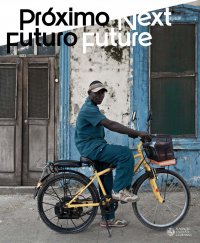
In addition to fulfilling its aims of promoting visual artists through the reproduction of their works, it is customary practice for the Next Future journal which is published in May to present short articles or essays on themes relating to the problems set out in the manifesto of this Gulbenkian Programme. In our April issue, we published a series of texts that were mainly written by writers and intellectuals from those countries, thus providing an opportunity to appreciate the view from the ‘interior’. This time, most of the texts are by authors who, being from the exterior, give us an ‘outside’ view of the history of what has been the western representation of many of these countries, a view that specialists from the area of cultural studies have named ‘Orientalism’.
Newspaper 9 (4.3 MB)
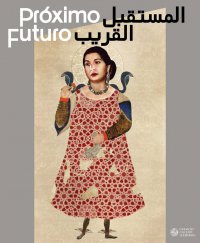
When the Gulbenkian Program “Next Future” began in 2009, no one have would imagined that just three years afterwards the revolutionary movements in North Africa and in the Middle East would take place. And yet this burst of rebellion, of longing for freedom and democracy not only rocked these countries with immediate consequences in terms of regime changes as it shook the world and drew attention to populations, creators, policy-makers in these regions where there were so much ignorance to add to so many clichés, mostly negative.
Newspaper 8: The representation is always from a specific time; we must do it with evidences (4.07 MB)
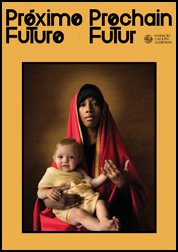
What, for so many years, has corresponded to a land of utopia - in the case of South America – or of a continent of fear and mystery - in the case of Africa – it was now replaced in the first case for a continent of rich and powerful countries - in the case of South America - today a region of inexhaustible resources, a new 'El Dorado', or of insolubility, in the case of Africa... This means that there are no neutral or objective perceptions...
Newspaper 7: Next Future three years later (4.49 MB)
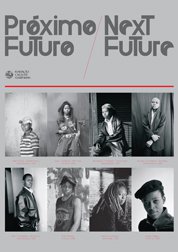
When, in January 2009, we started the Gulbenkian Contemporary Culture Program focused on countries, creators, … artists, and the problems of Latin America and the Caribbean, Africa and Europe, ... we did not imagine that at the time of writing this editorial, these countries were to live changes so profound with consequences for all mankind ... it allowed us to all, to broaden your horizons and better understand the world. And of this, we have immense pride.
Exhibition booklet of the 9th Bamako Encounters of Photography (1.2 MB)
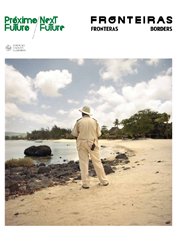
The exhibition 9th Encounters of Photography in Bamako appears in the programming of the meetings for 2009... they try to sketch and analyze different faces of this complex reality: the anchoring and mobility, the persistence of tradition and change, public space and private space, the individual and their relationship with each other; the innate and the acquired... - here is what we are fortunate to share with you.
Newspaper 6: Arts in Africa and some took so long (2.79 MB)
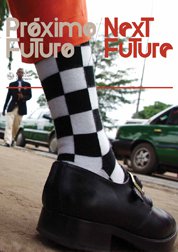
It is known that [in Africa] there is no direct relationship between economic development and artistic and cultural creation. However, with no market and no funding, artistic creation is not possible, or even training and production and, in countries where the minimums have happened, the result is very positive ... The Gulbenkian Program “Next Future” has the enormous pride of,… being part of this international movement of cultural trade with Africa.
Newspaper 5: Is there a method to be happy? (990.01 KB)
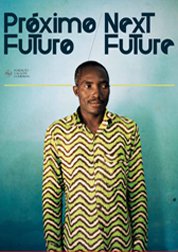
The fourth Workshop of the “Next Future” research was devoted to Happiness ... But today - in a very different world where consumption on the one hand, and social exclusion or the outrageous growth of refugees or immigrants expelled, on the other - it is possible that policy today has a role, which in the last century had not been considered as sharing the possibility to be happy.
Newspaper 4: Mobility and Hospitality (3.22 MB)
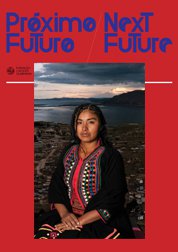
In the case of artists, intellectuals and cultural agents in general,... [they] continue to circulate out of curiosity, for the need to learn, to share experiences, to collaborate with other partners... This is an important debate that will occupy the next few years because in it is implied the survival artistic innovation and cultural enjoyment in the Next Future...
Newspaper 03: Independent Cities (2.96 MB)
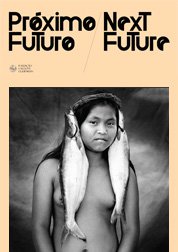
In this year of 2010, seventeen African countries celebrate 50 years of Independence and five Latin American countries decide to celebrate the bicentenary of their experience as a free nation, therefore this program is conducting a workshop on research and theoretical work, as part of a Cultural Program which focuses mainly on these concerns and cultural geographies, all lined up, we think, of great relevance.
Newspaper 2: Crisis. What crisis? (1.86 MB)
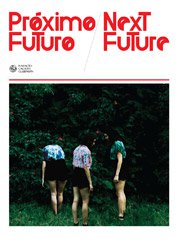
Crisis. What crisis? Or to be more precise, to which crisis are we referring to, and to which one should we respond? ... It is, above all, taking the crisis as a time to change the paradigm, especially the paradigm in which societies may continue to sustain themselves on consumption. They can not. There are limits to consumption, there are limits to the market and there, above all, limits to relativism about inhuman behavior.
Newspaper 1: Next Future (3.21 MB)
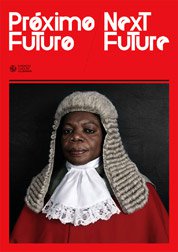
Can we intervene in the future, in the next future? We certainly can. Not in the sense of determining, shaping, or prophesying it ... But we do know that each one of us, incidentally or all together ... we are interfering in the future ...We begin our program with research and theoretical work and we will show the strangeness and joy of the arts.
